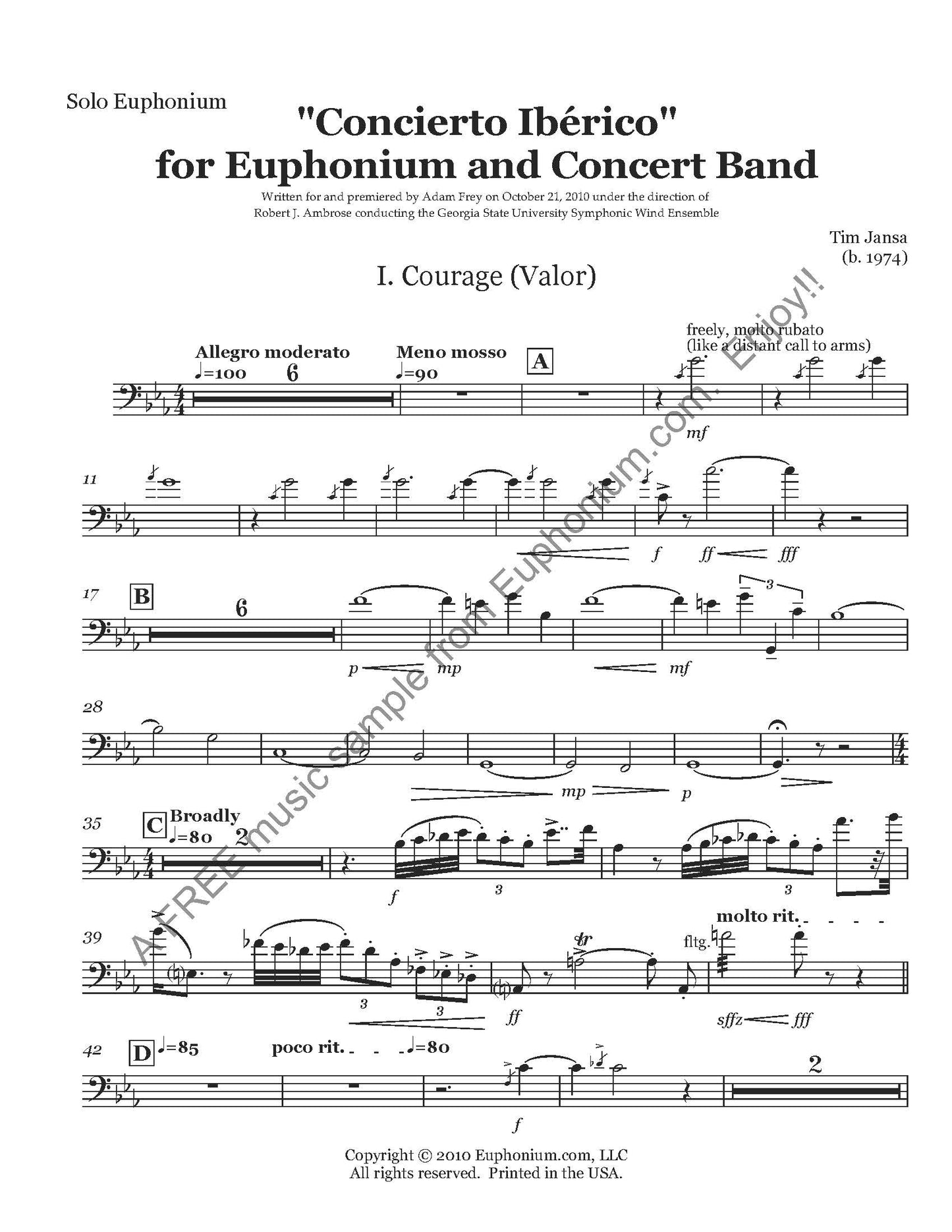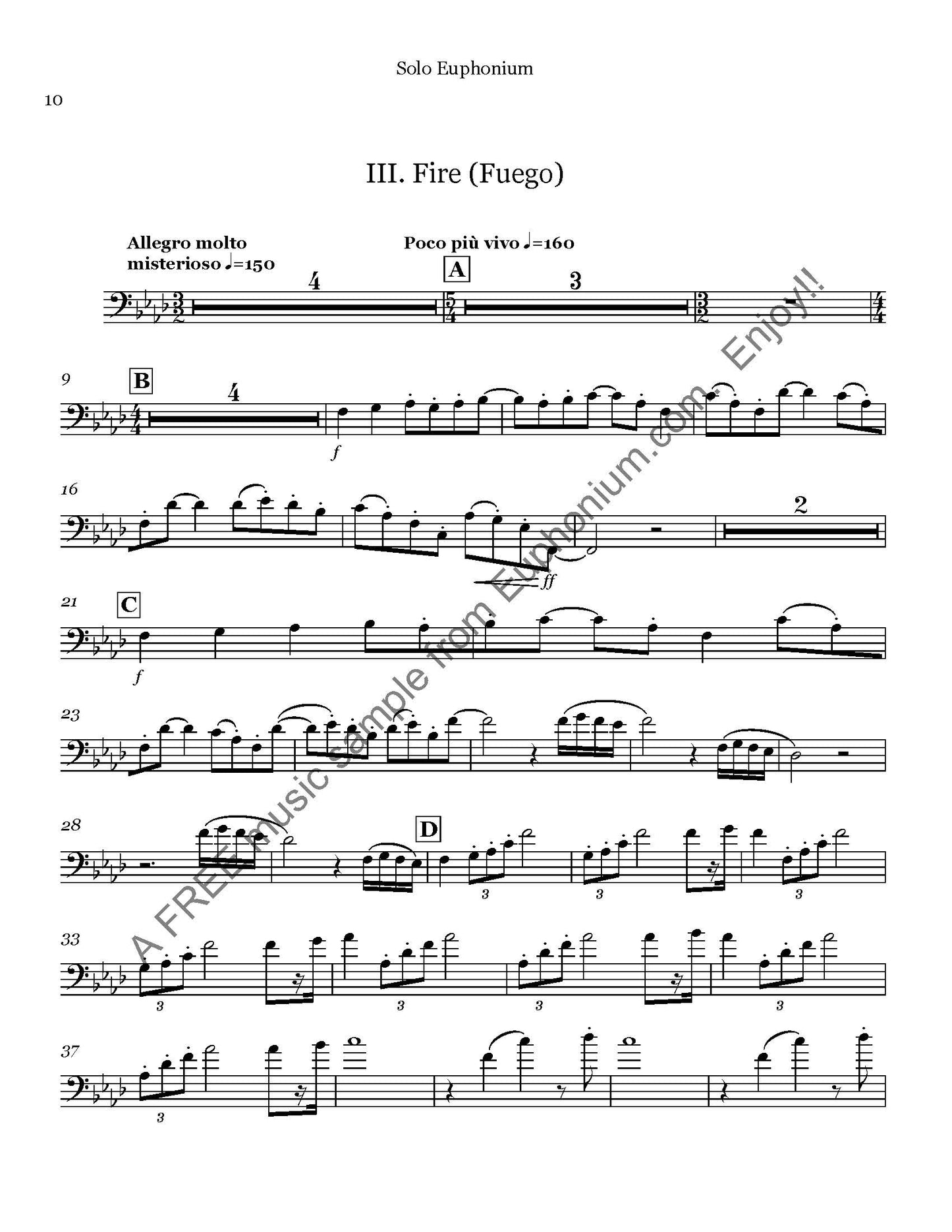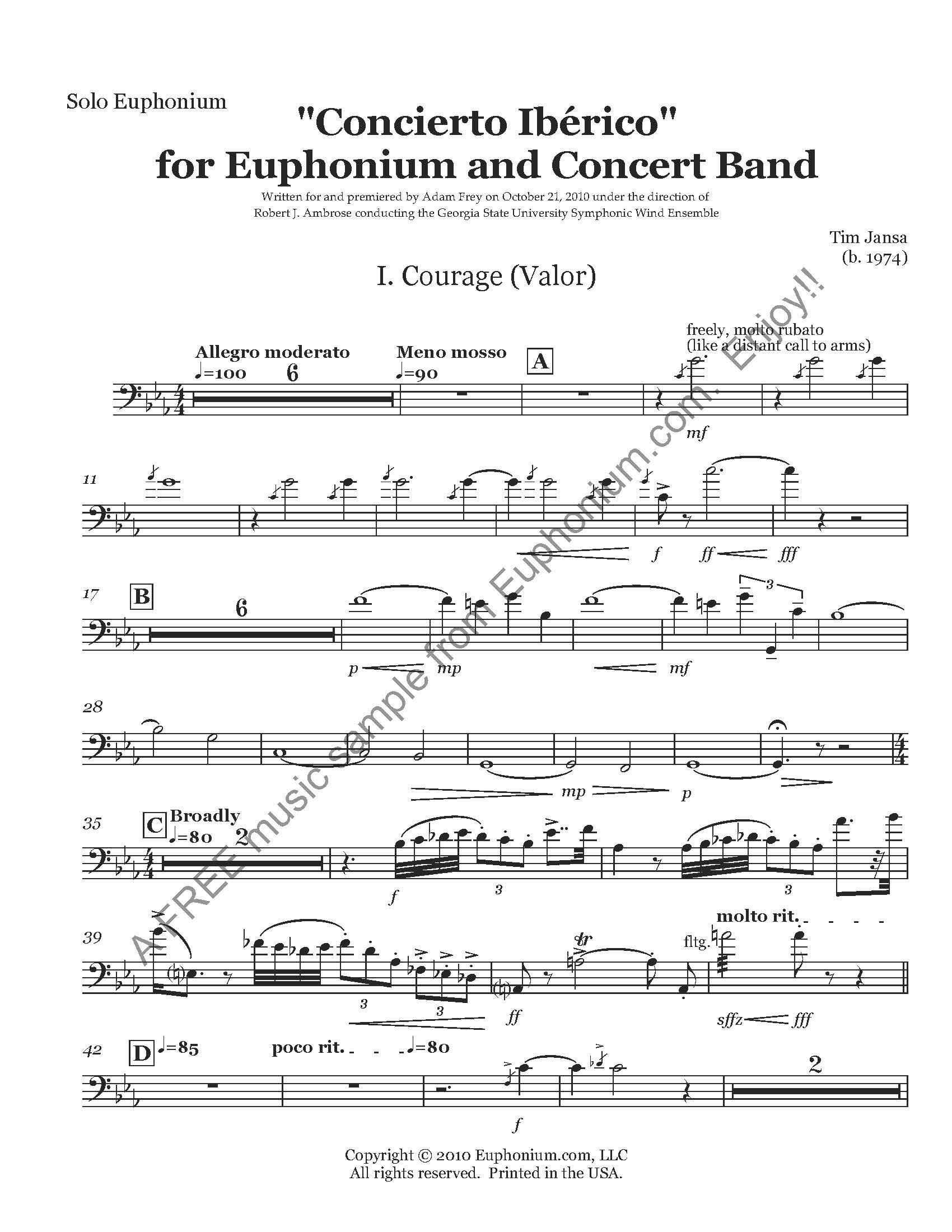Euphonium.com Publications
Jansa - Concierto Iberico
Jansa - Concierto Iberico
Couldn't load pickup availability
Difficulty: IV-V Length: 27:00
Sample: YouTube Playlist of Wind Band and Orchestra FULL Performances
Honoring the Spanish origin of the commission for Concierto Ibérico, each of this work’s three movements is modeled after a major festival of Spain: the Running of the Bulls in Pamplona; the Semana Santa (Holy Week); and the Fallas of Valencia. This concerto does not attempt a mere musical description of these festivals; rather, the underlying ideas–the philosophy, human ideals, and cultural concepts–form the foundation of this work. While festival scenes and elements are ubiquitous throughout the concerto, the three main aspects around which the movements are forged are: Courage, Faith and Fire. The musical language in this work is not stereotypically “Spanish”: not until the very end of the concerto does it become recognizably that of Spain.
1st Movement: Courage (Valor)
The movement opens with a fanfare-like motif reminding all those who are about to face an insurmountable challenge to gather their strength and courage for what is to come. During the introduction sequence, the mood alters between confidence, nervousness, fear, and peaceful resignation to one’s fate. When the running begins, nerves flare and fear returns, only to be interrupted occasionally by brief episodes of rest and reflection. Ultimately, doubt vanishes, courage returns and confidence prevails. Finally, this movement – which presents a true tour-de-force for both the soloist and the orchestra – draws to an exhausted, yet, glorious close.
2nd Movement: Faith (Fe)
The people of the Iberian Peninsula not only practice faith in reverent and quiet devotion: they also cheerfully celebrate their beliefs in joyous festivals. The movement opens with a slow and introspective English horn theme that leads into a prayer-like section in which the solo euphonium appears to freely and meditatively improvise over a sparse orchestral accompaniment, while distant church bells call the faithful to worship. Soon, lively festivities begin, with various motifs from this and the previous movement blending into a climactic sequence. The return to the earlier prayer motif brings this movement to a peaceful and meditative conclusion.
3rd Movement: Fire (Fuego)
Several orchestral hits awaken those attending the Fallas of Valencia and ring in the festivities of the day with an explosive display of firecracker and fireworks barrages. The sheer overwhelming sensory impact of the celebratory crowd on an observer walking through the festive plazas and streets become mere glimpses and fleeting impressions, represented by short fanfares and brief reprises of previous thematic material. Outbursts of a rapid motif gradually build to the climactic collapse of the flaming pyres. Out of the sparks and smoldering embers emerges a peaceful Andalusian folk song. The concerto ends in a characteristically “Spanish” fashion, bringing this work to a rousing conclusion.
Parts: BC












